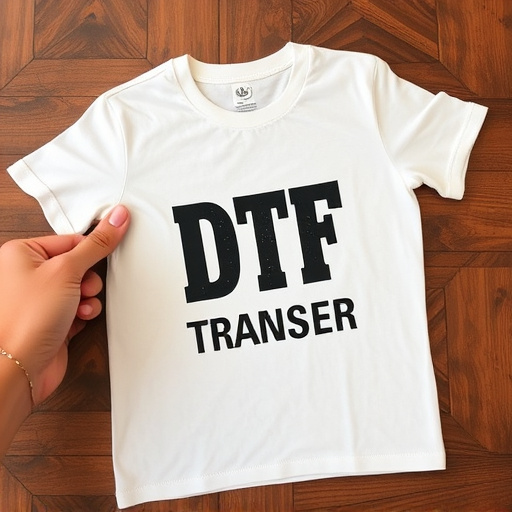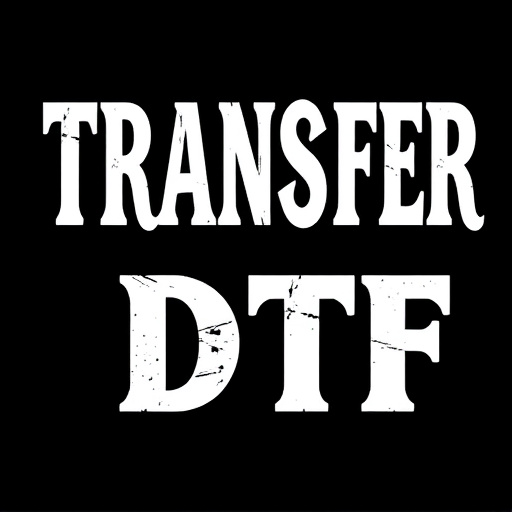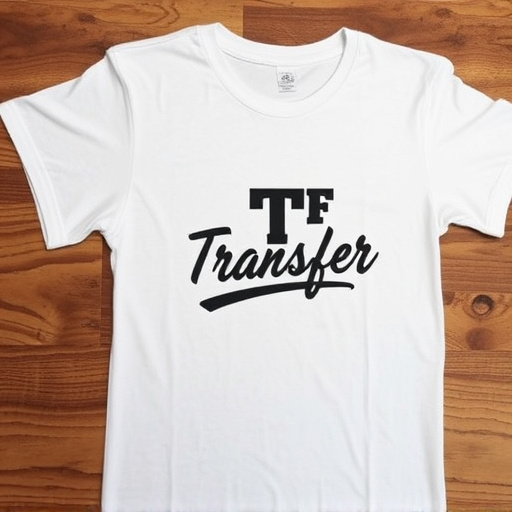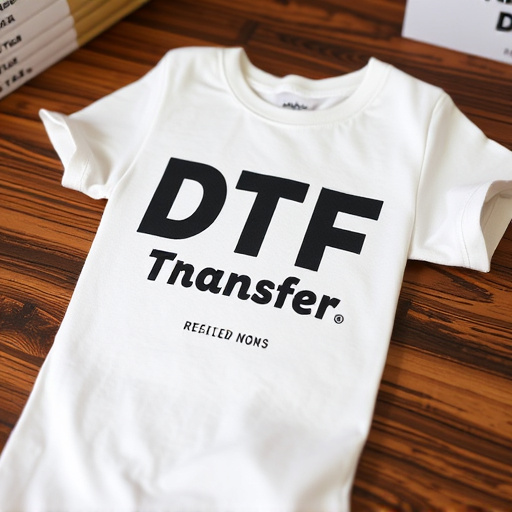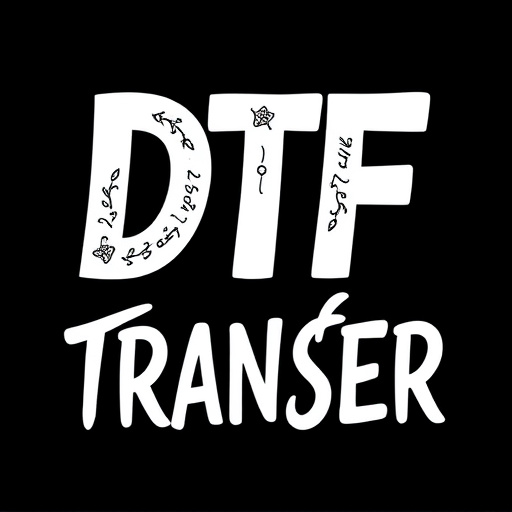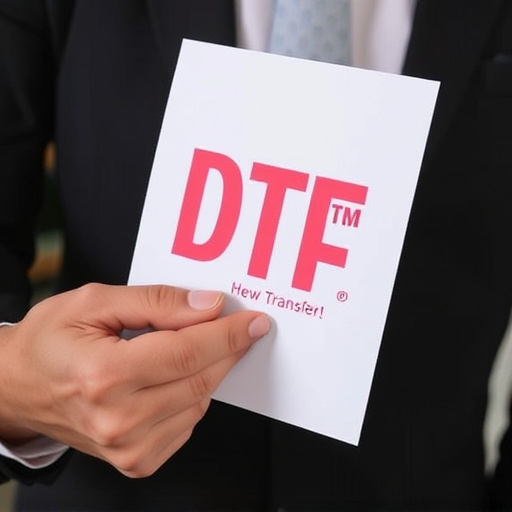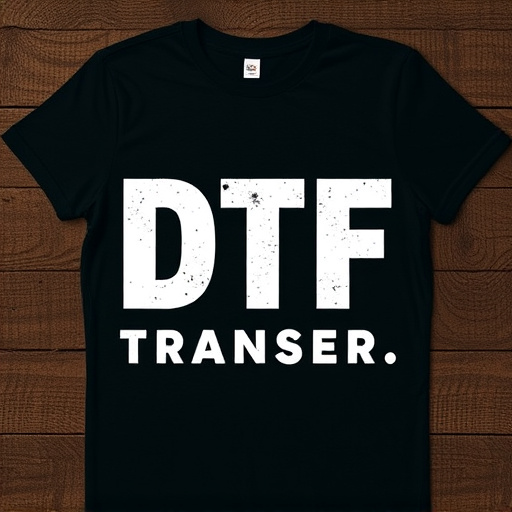Direct-to-film (DTF) transfers have revolutionized garment customization by enabling high-quality printing directly onto fabric using specialized equipment. These transfers, known for their intricate designs and vibrant colors, are suitable for a wide range of clothing and accessories. The process involves transferring digital images through a direct printing mechanism, ensuring exceptional clarity on various fabrics. DTF Transfers are favored by small businesses and large manufacturers due to their quick turnaround times, cost-effectiveness, and versatility, unlocking boundless creative potential in the apparel industry. Ideal garments include T-shirts, hoodies, sweatshirts, and tank tops, with materials like cotton and polyester blends offering optimal results.
Direct-to-film (DTF) transfers are transforming clothing design, offering a versatile approach for creating intricate, high-quality prints on various fabrics. This article explores the ins and outs of DTF technology, its numerous advantages for clothing production, and the diverse range of items it suits. From understanding the transfer process to choosing the right materials and creative applications, we’ll guide you through implementing DTF designs into your wardrobe, showcasing its potential beyond fashion.
- Understanding Direct-to-Film (DTF) Transfers: A Comprehensive Overview
- Advantages of DTF for Clothing Design and Production
- Suitable Clothing Items for DTF Transfer Techniques
- Choosing the Right Materials for Optimal DTF Results
- Creative Applications of DTF in Fashion and Beyond
- Step-by-Step Guide to Incorporating DTF Designs into Your Wardrobe
Understanding Direct-to-Film (DTF) Transfers: A Comprehensive Overview

Direct-to-film (DTF) transfers have revolutionized the way we apply designs to clothing, offering a versatile and efficient method for creating unique, personalized garments. This cutting-edge technology allows for high-quality printing directly onto fabric using specialized equipment, eliminating the need for traditional screen printing or heat transfer methods. DTF Transfers are particularly appealing due to their ability to produce intricate and detailed images with vibrant colors, making them suitable for a wide array of clothing items, from t-shirts and hoodies to caps and bags.
The process involves using a digital image that is then precisely transferred onto the fabric through a direct printing mechanism. This method ensures exceptional clarity and precision, allowing for complex designs and even photo-realistic prints. DTF Transfers are not limited to specific fabrics; they can be applied to various materials, including cotton, polyester, and mixed blends, catering to diverse consumer preferences and fashion trends. With their quick turnaround times and cost-effectiveness, DTF Transfers have become a popular choice for both small businesses and large-scale clothing manufacturers, offering endless possibilities for creative expression in the apparel industry.
Advantages of DTF for Clothing Design and Production

Direct-to-film (DTF) printing offers numerous advantages for clothing design and production, making it a game-changer in the fashion industry. One of its key benefits is the ability to create intricate and vibrant designs with exceptional detail and color accuracy. This technique allows designers to bring their artistic vision to life by reproducing complex graphics and patterns directly onto fabric without the need for traditional screen printing or plaque making.
Additionally, DTF transfers are highly versatile, suitable for a wide range of clothing items, from t-shirts and hoodies to dresses and even accessories like caps and bags. It streamlines the production process as it combines design and printing in one step, reducing time and labor costs significantly. This efficiency is particularly attractive for small-batch productions or custom clothing lines, where quick turnaround times are essential.
Suitable Clothing Items for DTF Transfer Techniques

Direct-to-film (DTF) transfer techniques offer a versatile and efficient way to print designs on various clothing items. The suitability of garments for DTF methods depends on their material composition and construction. Generally, materials like cotton, polyester blends, and raglan sleeves work best due to their even surfaces and ability to withstand the heat process. T-shirts, hoodies, sweatshirts, and tank tops are popular choices, allowing for detailed and vibrant prints.
For a successful DTF transfer, it’s crucial to consider the garment’s cut and shape. Garments with simple lines and minimal seams facilitate easier application of the design. Additionally, ensuring the fabric is clean, dry, and free from any contaminants enhances adhesion. This technique is particularly suitable for creating custom, personalized clothing, enabling designers and wearers to express individuality through unique, on-demand prints.
Choosing the Right Materials for Optimal DTF Results

When designing direct-to-film (DTF) prints for clothing, selecting the appropriate materials is paramount to achieving optimal results. The fabric’s composition and weight play a significant role in the final quality of the DTF transfer. For best outcomes, choose fabrics with a smooth surface that allow ink to adhere evenly. Natural fibers like cotton or linen are often ideal as they absorb ink well and provide a soft, comfortable feel after printing. However, synthetic blends can also be suitable, especially when durability is a priority.
Additionally, consider the garment’s intended use and environment. For example, if designing for athletic wear, opt for breathable fabrics that wick away moisture. Conversely, for outdoor clothing, water-resistant or waterproof materials are essential. Testing different fabrics and combinations beforehand ensures you find the perfect balance between aesthetics and functionality, ultimately enhancing the overall DTF printing experience.
Creative Applications of DTF in Fashion and Beyond

Direct-to-film (DTF) printing has revolutionized the fashion industry, offering creative applications beyond traditional methods. This innovative technique allows for intricate designs to be directly applied to clothing materials, resulting in unique and personalized garments. Designers are leveraging DTF transfers to explore limitless creativity, from bold graphics and eye-catching patterns to fine art reproductions and custom texturing.
Beyond clothing, DTF technology is expanding into various sectors, including accessories, home decor, and even furniture. Its versatility enables the creation of custom phone cases, tote bags, wall art, and more, catering to individuals seeking expressive and personalized items. By embracing DTF printing, artists and manufacturers can offer bespoke products that cater to diverse tastes and trends, ensuring a place for this technology in both contemporary fashion and everyday lifestyles.
Step-by-Step Guide to Incorporating DTF Designs into Your Wardrobe

Incorporating Direct-to-Film (DTF) designs into your wardrobe is an exciting way to personalize and elevate your style. Here’s a step-by-step guide to help you seamlessly add DTF transfers to various clothing items:
1. Select Your Item: Choose the garment or accessory where you want to apply the design. T-shirts, hoodies, hats, and bags are popular choices due to their versatility and ability to showcase the print. Ensure it’s made of a suitable material like cotton or polyester for best results with DTF transfers.
2. Choose Your Design: Browse through various online platforms or create your own design using graphic software. Select an image that resonates with you, keeping in mind the message or aesthetic you want to convey. The design should be high-resolution and in a format compatible with DTF printers (usually vector graphics like SVG).
3. Prepare Your Workarea: Set up a clean, flat surface for your workspace. Ensure good lighting to avoid any mistakes during the application process. Gather all necessary tools: your chosen clothing item, DTF transfer paper, a heat press machine or iron, and a clean cloth for protection.
4. Apply the Transfer: Carefully place the DTF transfer paper featuring your design onto the garment, aligning it precisely where you want the print to appear. Ensure no bubbles or wrinkles form under the paper. Follow the manufacturer’s instructions for the optimal heating time using either a heat press machine or an iron. The heat will activate the inks, transferring the design onto the clothing item.
5. Remove the Paper: After the recommended cooling period, carefully peel away the transfer paper. If done correctly, your design should now be permanently printed on the garment, ready to turn heads and spark conversations!

